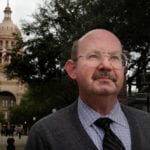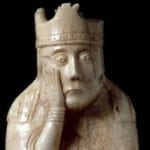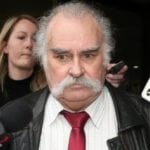 Humans
Humans  Humans
Humans  Miscellaneous
Miscellaneous 10 Famous Brands That Survived Near Bankruptcy
 Mysteries
Mysteries 10 Chilling Facts about the Still-Unsolved Somerton Man Case
 Weird Stuff
Weird Stuff Ten Truly Wild Theories Historical People Had about Redheads
 Movies and TV
Movies and TV 10 Actors Who Hate Their Famous Movie Roles
 Technology
Technology 10 Thrilling Developments in Computer Chips
 Misconceptions
Misconceptions 10 “Groundbreaking” Scientific Studies That Fooled the World
 Books
Books 10 Famous Writers Who Came Up with Everyday Words
 Mysteries
Mysteries 10 Unsolved Mysteries from the Cold War
 Pop Culture
Pop Culture 10 Fictional Sports That Would Be Illegal in Real Life
 Humans
Humans 10 Inventors Who Were Terrible People
 Miscellaneous
Miscellaneous 10 Famous Brands That Survived Near Bankruptcy
 Mysteries
Mysteries 10 Chilling Facts about the Still-Unsolved Somerton Man Case
Who's Behind Listverse?

Jamie Frater
Head Editor
Jamie founded Listverse due to an insatiable desire to share fascinating, obscure, and bizarre facts. He has been a guest speaker on numerous national radio and television stations and is a five time published author.
More About Us Weird Stuff
Weird Stuff Ten Truly Wild Theories Historical People Had about Redheads
 Movies and TV
Movies and TV 10 Actors Who Hate Their Famous Movie Roles
 Technology
Technology 10 Thrilling Developments in Computer Chips
 Misconceptions
Misconceptions 10 “Groundbreaking” Scientific Studies That Fooled the World
 Books
Books 10 Famous Writers Who Came Up with Everyday Words
 Mysteries
Mysteries 10 Unsolved Mysteries from the Cold War
 Pop Culture
Pop Culture 10 Fictional Sports That Would Be Illegal in Real Life
10 Doctors And Healers Who Went Beyond The Call Of Duty
We’ve all read the headlines about the evils of the medical community. The web is literally crawling with horror stories of men and women who scrape together thousands of dollars and every ounce of trust they have and place them in the “capable” hands of a physician—all in vain. But just when you’re about to lose your faith in humanity, there comes a light shimmering out of the darkness. This list is about doctors and healers who will go to hell and back to save a single life.
10 Dr. Jill Seaman
Sudan
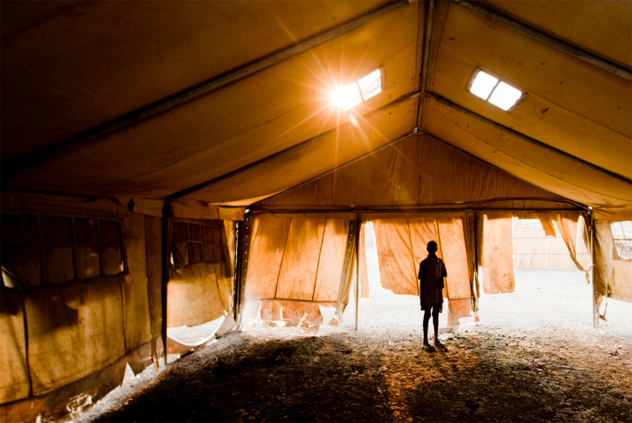
The west Upper Nile is one of the world’s most remote areas, with no roads, infrastructure, markets, transportation, or health and educational systems. As a result, the ethnic population grows extremely isolated, and for a long time no one knew of the epidemic that killed most of the Duar population. The armed conflict and civil war that had plagued Sudan for most of its independence since 1955 had weakened the population further, while the government seemed to have no interest in stopping either the epidemic or the war.
As the epidemic began to spread, the government in Khartoum banned all international agencies. But the Dutch branch of Medecins Sans Frontieres (MSF) stayed and deployed a team headed by Dr. Jill Seaman. Named a “Hero of Medicine” by Time in 1997, Dr. Seaman first traveled to Sudan when war broke out in 1983 to work with the International Refugee Committee.
The team set up operations in the village of Leer, several days’ walk from Duar. In surrounding villages where the entire population had died, cows wandered unattended and survivors were so emaciated they could barely stand. The epidemic was kala-azar (“black sickness” in Hindi), or Visceral leishmaniasis, the same protozoal disease that decimated the population of East India in the 19th century. In between bombings of their Leer facility, Dr. Seaman and her colleagues worked tirelessly.
In the seven years they served, Dr. Seaman and the MSF staff treated 19,000 patients. Jill Seaman has personally dealt with more than 10,000 cases of kala-azar—more than anyone else in the world. Two years after the MSF team pulled out, Dr. Seaman and Sjoujke de Wit, a Dutch nurse, returned to Duar and launched the Sudan Medical Relief program. The program started as a privately funded organization and later became a fully integrated MSF program.
9 Dr. Georges Bwelle
Cameroon

In the 1980s, hospitals around Cameroon were ill-equipped, overcrowded, and understaffed; there were no neurosurgeons or other specialists to tend to the sick population. Patients came in as early as five in the morning and still had to wait for hours to be seen; some even died while waiting.
Today, the doctor-to-patient ratio has risen to one doctor for every 5,000 people, according to the World Health Organization. But because two out of five Cameroonians live below the poverty line, many still can’t afford to be seen by a physician.
With the help of volunteers, Dr. Bwelle started the nonprofit ASCOVIME in 2008. Every Friday, they pile into vans with medical supplies tied to the roof and travel through rough terrain to remote villages. On each trip, they receive around 500 patients, some of whom have come as far as 60 kilometers (37 mi) on foot. Malaria, malnutrition, diabetes, tuberculosis, sexually transmitted infections, and parasitic diseases are among the many illnesses they treat. Through the program, they also give away free eye glasses, crutches, and birth certificates.
Dr. Bwelle and his volunteers perform minor surgeries in the evenings and finish in the early hours of the next morning. In a given year, they perform up to 700 free surgeries, and have treated close to 19,000 patients since 2008. In addition to running these free clinics, Dr. Bwelle works as a surgeon in private hospitals around the capital; this second job funds 60 percent of the free operations, and the rest is funded through private donations.
8 Dr. Denis Mukwege
Democratic Republic of Congo
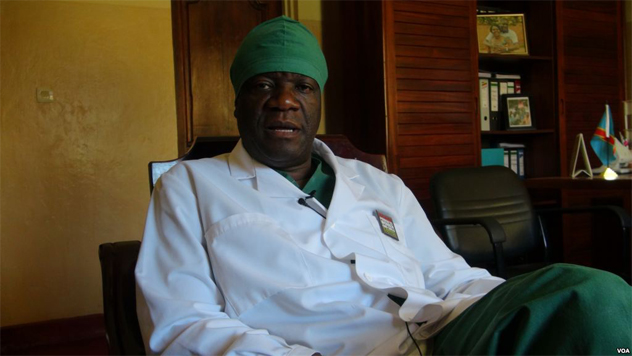
For 14 years, Dr. Denis Mukwege treated patients with the bare minimum of resources smack dab in the middle of a raging war. Dr. Mukwege’s hospital was raided and destroyed—along with the patients in it—twice, and both times he had to flee and start from scratch. In 1999, a year after the last attack, Dr. Mukwege received a rape victim with bullet wounds in her genitals and thighs. Three months later, 45 more women came in with the same story. To this day, Dr. Mukwege has helped some 30,000 women using a four-stage approach, which includes psychological support, surgical care, socio-economic support, and legal assistance.
On October 25, 2012, an attempt was made on the life of Dr. Mukwege. He survived the attack, then fled to Europe with his family. But less than a year later, Dr. Mukwege, inspired by the determination of the Congolese women who chipped in for his plane ticket home, returned to continue the fight. The war in Congo is not really a religious conflict between Christians and Muslims; it’s more along the lines of a conflict of economic interests. It is being waged against Congolese women, supported by major international corporations that hold an interest in its outcome.
7 Dr. Tom Catena
Sudan

Dr. Tom Catena is an American missionary doctor from upstate New York who has lived and worked in the Nuba mountains of Sudan since 2008. When the attacks began in June 2011, Dr. Tom Catena decided to stay. What began as an assault on the militants became an all-out assault on the Nuba population. Civilians were mass executed and buried in eight mass graves around the region.
As the only qualified surgeon at the only hospital in Nuba, Dr. Tom saw hundreds of patients a day. Almost overnight, the hospital went from doing elective surgeries to doing trauma surgery in the middle of a war zone. The worst were the bombing casualties; Antonov bombs are dropped from converted cargo planes every week by the Arab-centric regime in Khartoum to impose authority over the non-Muslims and non-Arabs, who the Arabs consider second-class citizens.
Dr. Tom fears that the Nuba mountains will eventually become a second Darfur if air strikes and massacres continue under Omar Al-Bashir, the president of Sudan. And with war comes starvation, disease, and displacement—at least one child dies of malnutrition every day, and many are dying of malaria because the Sudanese government refuses to allow humanitarian organizations into the country.
6 Dr. Gino Strada
Sudan, Afghanistan, Iraq
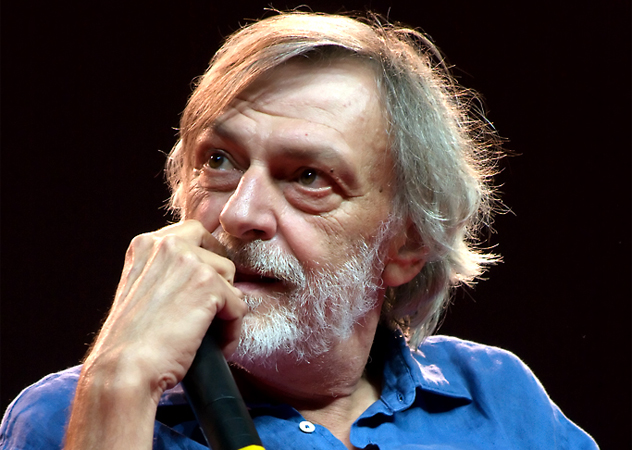
The Salam Centre Hospital in Sudan is like a shining white beacon of hope in the middle of a ravaged and war-torn wasteland. It is absolutely spotless; infection rates there are lower than many hospitals in the US or the UK. The Salam Centre is the only hospital in Sudan that offers first-rate open heart surgery for free to patients from across Africa.
Amid the calm setting is a rugged, chain-smoking man who started everything in 1994. Dr. Gino Strada is a surgeon and heart and lung transplant specialist who devotes his life to living in some of the worst places on earth—like Afghanistan, Iraq, Sudan, or any of the countries aided by Emergency, an international aid organization. In its 19 years of existence, Emergency has treated over five million people, and Dr. Strada has personally performed more than 30,000 surgeries.
Dr. Strada built the Salam Centre in the middle of the Sudanese desert and negotiated with the Taliban so he could operate the hospital well within their front lines. He did this and more at a time when the Red Cross fled and NATO said negotiating was impossible. At 65, most men think about retiring and going fishing—but for Gino Strada, the operating room is the most important thing. In Afghanistan alone, Emergency runs four hospitals and 34 clinics that mop up the mess the war is causing, all without NATO’s help.
5 Dr. Robert Paeglow
United States
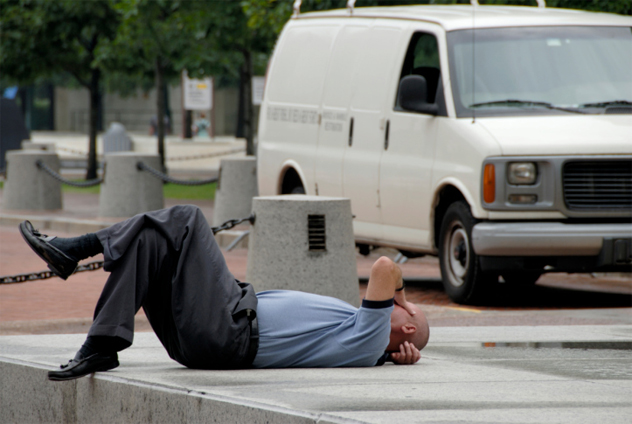
To those whose lives he has changed, Robert Paeglow is known simply as “Dr. Bob.” But Dr. Bob is so much more than a doctor to people in need. At age 36, with a wife and four kids, he decided to go to medical school. After graduating in 1994, he started working in family practice and spent his vacations going on mission trips to Africa. Then Dr. Bob gave up everything again to open a clinic in the poorest section of Albany, New York, where most doctors wouldn’t open their car door. He had a vision to open a center where patients could get not only medical help, but spiritual and socio-economic help as well.
Dr. Bob treats his patients, prays with them, and gives them medicine if he has it. If he doesn’t, he pays for it and then gives it to them. As a result, the Paeglows have very little they can call their own. Dr. Bob takes absolutely no salary and survives on donations. But even when he receives money from donations, he usually puts it back into his practice to continue giving free medicine to his patients.
4 Sergio Castro
Mexico
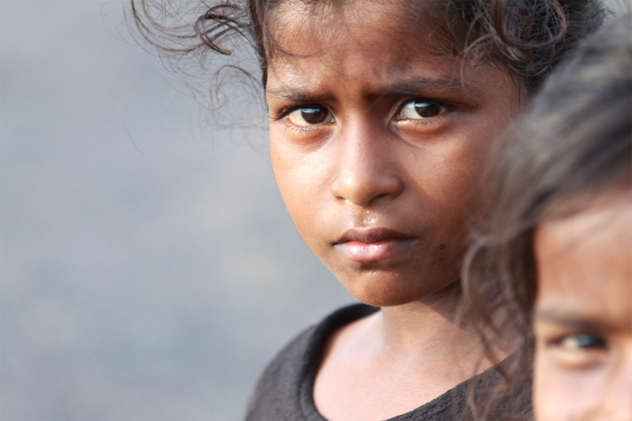
Neither doctor nor priest, 72-year-old Sergio Castro nevertheless works every day to fill the yawning gap in health care in the state of Chiapas. Although Mexico has improved access to healthcare services through its universal health bill, the kind of labor-intensive care that Sergio Castro provides is far beyond the capabilities of rudimentary health centers.
Known as Don Sergio around town, he spends most of his time patiently cleaning and bandaging wounds that frequently become infected. Don Sergio accepts no cash from his patients, believing they can be more motivated to heal without worrying about money. When he can gather enough donations, every penny makes its way to the villages to build schools and treat their water, or to more personalized projects, such as building a small convenience store for one of his paralyzed patients to run from home.
Each afternoon, Don Sergio sees patients at a small clinic; many of them are Mayans from the highlands and are among Mexico’s “forgotten” citizens after suffering centuries of violence, discrimination, and neglect. Poverty, mismanagement of resources, and negligence aggravate the complexities of health care in Chiapas.
3 Dr. Tan Lai Yong
Yunnan Province, China
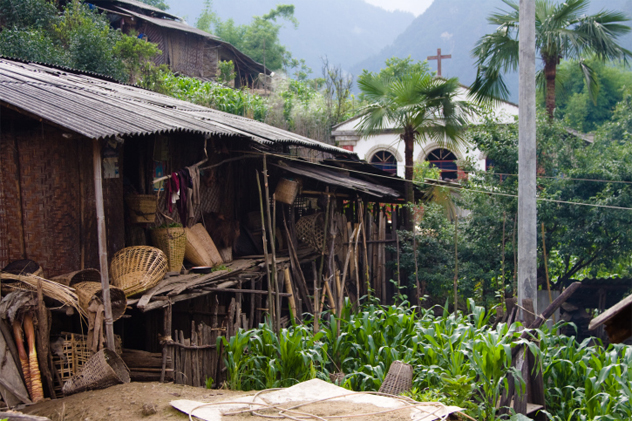
In 1996, Dr. Tan Lai Yong packed his bags and moved with his family to Yunnan, China, where he joined a community development team and worked with poor villages, orphans, and the disabled.
The next 15 years saw him getting on 16-hour bus rides, bicycling 30 kilometers (18.6 mi) daily to remote villages, running clinics, and training over 500 village doctors. He taught the doctors to draw up management plans and handle prescriptions. Partnering with local hospitals, Dr. Tan helped build up their own capabilities and had them perform 10 to 15 surgeries daily as opposed to doing only four like they were used to. He created innovative ways to teach health and hygiene to the different ethnic minorities and provided basic medical training to the farmers. Dr. Tan acted as a bridge to bring in other Singaporean doctors who performed free surgeries. With volunteer students, Dr. Tan also initiated a tree-planting program that helped raise the farmers’ incomes and reduce soil erosion.
The Tans still lead a simple life now that they’re back in Singapore, getting by with financial support from their Church and Dr. Tan’s monthly wage as a partner in a Chinatown clinic.
2 Dr. Catalin Cristoveanu
Romania

Romania is a country riddled with corruption, especially in the medical sector. That’s why Dr. Catalin Cristoveanu has taken it upon himself to fly sick children to Germany, Austria, or Italy to be treated by doctors who don’t demand bribes. In a place like this, where bribery in the medical field is commonplace, you can’t expect to have your sheets changed or your medications administered without bribing a nurse. It’s not uncommon for a surgeon to refuse to operate on a child without a bribe—a deadly scenario for poor families. This is one of the reasons Romania’s infant mortality rate is more than double that of the European Union; one out of 100 infants don’t even reach their first birthday.
In 2005, the sum of bribes across Romania was estimated to be $1 million per day. In a solitary effort to eliminate corruption, Dr. Cristoveanu has implemented a zero-tolerance policy to corruption in the Marie Curie Hospital, which in itself had disastrous consequences. The cardiac unit was left practically unstaffed, since nurses and qualified professionals do not bother to apply for jobs in which they cannot take bribes. In addition, in 2011 alone, some 2,800 doctors abandoned Romania—which spends only four percent of its budget on health care—to work in Western Europe.
Dr. Cristoveanu continues to fight for the children who come to him for care. He is more than a hero to these children and their family—he’s a lifesaver.
1 Abdul Sattar Edhi
Pakistan
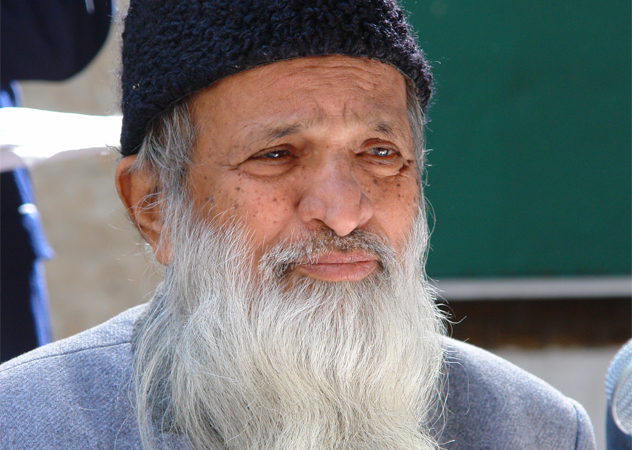
He wears blue overalls, a Jinnah cap, and sports a long silvery beard. He has been stopped and interrogated several times at airports for his dress and his beard. He is Abdul Sattar Edhi, the 85-year-old philanthropist who looks more like a Taliban warlord than the most revered and respected man in Pakistan. He lives in the congested neighborhood of Mithadar in Karachi, Pakistan, and serves as the spiritual and moral adviser to a vast nonprofit network of free hospitals, maternity and cancer clinics, orphanages, blood banks, and drug rehabilitation centers.
Abdul Sattar Edhi started everything in the early 1950s when he dropped out of school and began selling toys and food on the streets. After some time, he sold his little business for 5,000 rupees, which he used to buy a battered old van that he converted into his first ambulance. In it he set out around Karachi transporting the sick and picking up unclaimed bodies from the streets and rivers.
As donations started pouring in, the Edhi foundation gradually expanded to become Pakistan’s largest welfare organization with over 300 centers that provide medical aid, family planning, and emergency assistance. The Edhi Foundation has saved 20,000 infants, trained 40,000 nurses, housed 50,000 orphans, delivered roughly one million babies, and rehabilitated over three million children. The Edhi Foundation basically runs on nothing. And despite the foundation’s immense growth, Edhi himself doesn’t receive a salary.
Lara V is a nurse and a third year medical student who has been recently diagnosed with some congenital heart defect. She has an obsession for birds and epic fantasy. Should you like to discuss any of the above, you can contact her at [email protected]
